Hungarian wines might have bags of potential for the premium on-trade, but often sommeliers and buyers need just a little more persuasion to make room for them on their lists. Which is what the Wines of Hungary Sommelier Workshop was all about.
Ask the average sommelier or wine buyer what some of their biggest frustrations are in their jobs and one of the outstanding ones will be time. The time to breathe, look outside of the day job and go out to taste wine and discover new producers and ideas for their lists.
Conversely ask the average wine producer or importer what they find so hard about cracking a new market or getting more wines listed and it often comes down to access. The opportunity to meet, talk and show their wines to these busy, stressed sommeliers and buyers.
So the ideal would be to find a middle ground where sommeliers and buyers feel they have enough time to go and discover something new, whilst producers and importers have the chance to go and show them what they have to offer.
New 90 minute format

Remi Cousin at Le Gavroche has persuaded Michel Roux to have a Hungarian wine on its mainly French wine list
Which is what The Buyer’s Hungarian Sommelier Workshop, run in partnership with Wines of Hungary UK, was all about.
A new 90 minute format designed in two halves. The first half dedicated to an expert panel and trade debate talking to sommeliers and buyers about their experiences of Hungarian wine, followed by a second half where importers and producers had the chance to show their wines to the sommeliers.
A session aimed at providing a quick overview of Hungarian wine, and crucially the direct advice and feedback from sommeliers and buyers that are successfully listing and selling Hungarian wines in their restaurants. And then the chance for buyers and importers to talk over different styles of wine in a relaxed open pour session.
On the expert panel we had restaurant and wine consultant, Peter McCombie MW, head sommelier at Le Gavroche, Remi Cousin, and Freddy Bulmer, buyer at The Wine Society.
Helping to show their range of Hungarian wines were representatives from Jascots Wine Merchants, Corney & Barrow, Boutinot and Matthew Clark.
Up for debate
First up came the panel debate and a chance to confront head on some of the perceptions, right or wrong, about Hungarian wines.
“It’s very easy to dismiss Hungary as an Eastern European country churning out mass market wines, but they are very keen to be seen as a middle European country with a long standing wine culture. The big challenge is overcoming the idea that it’s a former communist country producingwine that is all about volume and not about quality.”
However, it would appear that many of these long standing prejudices are held by the older generation, and not younger consumers keen to try out wines from different parts of the world. “Younger wine drinkers are more open minded, and there appears to be a sort of generational cut off point when people no longer associate that part of the world with communism and concrete,” said McCombie. “Those in their early 30’s for example, are very open and don’t have that same perception of mass market wines when they think of Hungary as perhaps my generation do.”
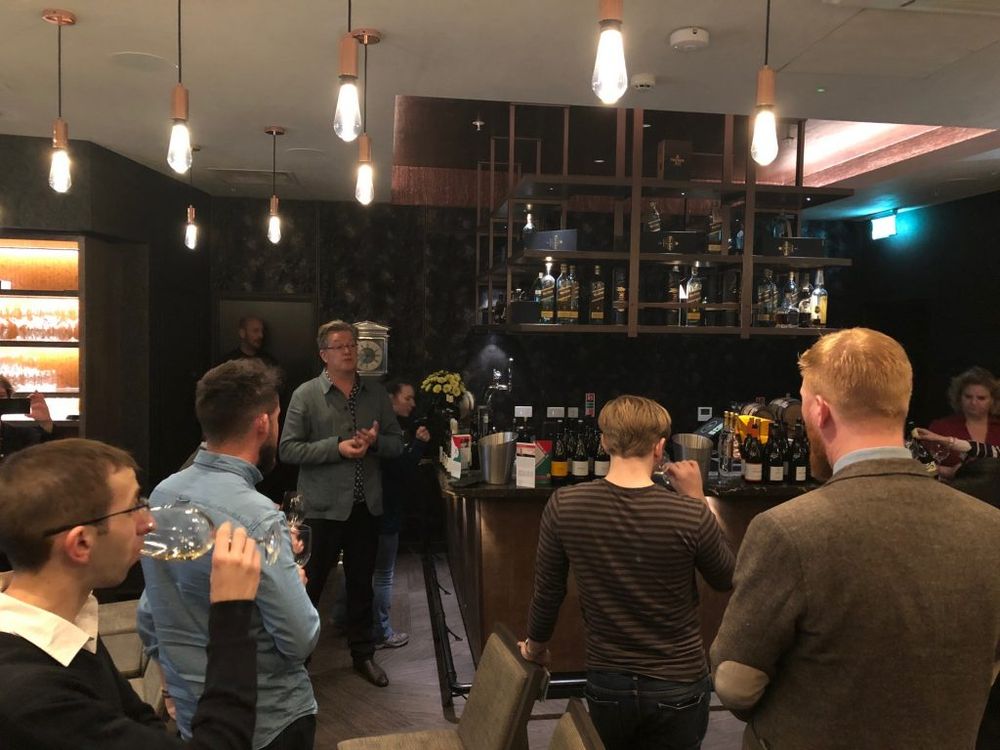
Peter McCombie takes sommeliers through some of the wines
Linguistic challenge
Another not insignificant hurdle facing Hungarian wine is the fact that the language is so obtuse. Think of an explosion in a Scrabble factory with all the vowels removed, and you get an idea of how linguistically challenging the language can be for native English speakers.
“Hungarian names can be really tricky, it’s a language stuffed with consonants and pronouncing the names can be hard,” confirmed McCombie.
This is also a problem according to the Wine Society’s buyer for Hungary, Freddy Bulmer. “Some of the wine names and region are very hard to pronounce or even attempt to pronounce, and a lot of our customers still order on the phone and getting people to take the leap and dare to ask for a Cserszegi Füszeres is quite a lot to ask of them,” he said.
For many Hungarian wine stops and starts at Tokaji, the country’s indigenous sweet wine. Now whilst it is good to be known for one thing, it’s not enough to build a strong export industry around. And it’s not just consumers that associate Hungary with Tokaji, but the trade as well stressed McCombie. There is a danger amongst some sommeliers and wine buyers who feel they have ticked the Hungary box if they list a Tokaji. “But Hungary is so much more than Tokaji,” he emphasised, adding that if Hungary can overcome these challenges then they have some really interesting wines to offer.
Opportunities for Hungarian wine

Wines of Hungary’s Zsuzsa Toronyi helps to pour sommeliers and buyers the next wine to taste
One of the big draws of Hungary is the fact that its varietals and styles make it a great match for pairing with food. Remi Cousin, the head sommelier at Le Gavroche is a big fan. “Hungarian wines are sensational with food,” he said. “We have had a lot of success with Hungarian Cabernet Franc, as the climate is very well suited to this variety.”
Another benefit of having a Hungarian wine on your list is the fact that it adds a novelty factor and something new, which particularly appeals to younger consumers with one eye on how visually appealing and unusual a wine is for their constantly updated Instagram feeds.
“The reason I love buying Hungarian wine is it makes my life easier, because there are some damn good wines, and the quality is very good,” said Bulmer. “And as far as our customers are concerned, it is relatively undiscovered, which means it’s a great opportunity for me to offer customers new wines they haven’t tried before. Probably my most recent exciting discovery was Kéknyelű which we have just brought in and has gone down really well. It’s a really nice drinkable white wine, but also has the rarity factor.”
Standout wines

Freddy Bulmer of the Wine Society introduces one of the Hungarian wines
So what is it that makes Hungarian wines stand out from the crowd, and differentiates them from other countries? According to Bulmer, “it’s all about the spice. Hungary and its cuisine are very much built around these aromatic, though not necessarily hot spices, painting a picture of diversity and bright colours”.
McCombie added that a lot of Hungarian grapes are not necessarily very fruity, but they more than compensate with bags of other aromas and flavours. “They have a bit of a phenolic grip, so you have great texture, and quite high acidity, which means they are sometimes not immediately friendly, but can be great when matched with food.”
The sheer variety of indigenous grapes from the country is another attraction of Hungarian wine, though, of course, this can add to its seeming complexity. “I always have this at the forefront of my mind when buying,” said Bulmer. “I’m not really interested in finding a Chardonnay or a Cabernet Sauvignon, or a Pinot Noir and bringing these back because we already have more than 1,600 wines available, but what you can’t get elsewhere are these amazing Hungarian varietals.”
He said he went so far as to only reluctantly try winemakers’ take on international verities. “I find myself thinking, I really don’t want to like your Chardonnay as I love your ferment. There’s no point as far as I’m concerned in buying a Hungarian Chardonnay that tastes like Burgundy – though I know that Burgundy is a bit more expensive! But still, when I’m buying from Hungary the wines have to have that structure and spice which differentiates them.”
Cousin, who admitted that when he first introduced an Australian wine to Le Gavroche’s list he was reminded in no uncertain terms that “this is a French restaurant”, conceded that for some customers unfamiliar with Hungary’s local varietals, well known crowd-pleasers such as Pinot Noir and Chardonnay are a much safer bet. But for those who are prepared to take a leap of faith, the rewards are more than worth it.
“For guests who want a safe bet then I would offer them a Cabernet Franc. But when you get to know your customers and they know and trust you, then you can steer them towards something a bit more adventurous. I believe Hungarian wines offer a bit more – you can match them with food, and they have real texture, bite and freshness which enables them to cut through the richness of some foods,” adding that some Hungarian wines bore similarities to wines from Alsace.
However, there are always going to be some customers who will always automatically turn to the Bordeaux section of a wine list. As Kelvin McCabe, group head sommelier at Adam Handling restaurants pointed out, “it’s not our job to say sorry, you can’t have the Le Pin today. That’s the reality for some restaurants, and there’s not much point in talking customers out of what they really want.”
He added: “I’m not embarrassed to put so-called cliché wines on my list if that’s what customers want,” he said. “I’ll have a Côte du Rhône, and a New Zealand Sauvignon Blanc to cover the bases. Of course in amongst that I’ll also want to have more interesting stuff, but I’m not judgemental about their choices. You need a good mix of the familiar and the unfamiliar.”
He advised putting some Hungarian wines on by the glass to encourage customers to experiment in a risk-free environment.

Jonny Kleeman of The Twisted Cellar says Hungary has a great story to tell
Value for money
One of the big attractions of wines from Hungary is that they undeniably offer great value for money, said Jascots managing partner Miles MacInnes. “People are looking for good quality and value – and choice is not simply just about region and varietals, because the global wine industry, foreign exchange rates and duty rates have thrown price points up into the air a bit. Now our customers are much more willing to look at alternative wines within price points they used to buy at but from different regions. You can’t separate quality from value, but what you would get from Hungary for £10 or £12 is likely to be a good deal better than what you’d get from the Cote d’Or for the same price.”
Bulmer said that when he goes on buying trips, he is always on the lookout for wines in the £8.50 bracket to put in mixed cases, while the £10 to £20 price range is moving into fine wine territory. “This is a good platform for us to tell a story,” he said. “The fine wine list is more about speaking to those more engaged customers who are prepared to spend a bit more on the wine. Tell them about the region, the producer, it’s all about the personal story. So we always have an opportunity for something different at that price point.”
Kate Hawkings, restaurant consultant, writer and co-owner of Bellita in Bristol, added that Hungary’s value for money was a big draw, not to mention possessing the curiosity factor. “I need a wine for £6.80, and nothing in the old Europe that will fit the bill. It’s groovy as well which helps!” she said
But Hungary adds a little bit of spice and interest to your wine list, she added: “Our punters are pretty adventurous and like to discover new things, especially if they’re gently priced. And those wines tend to be so good with food – they stand up for themselves in a way when a weedy standard Pinot Grigio, Sauvignon Blanc and the like can get easily washed away.”
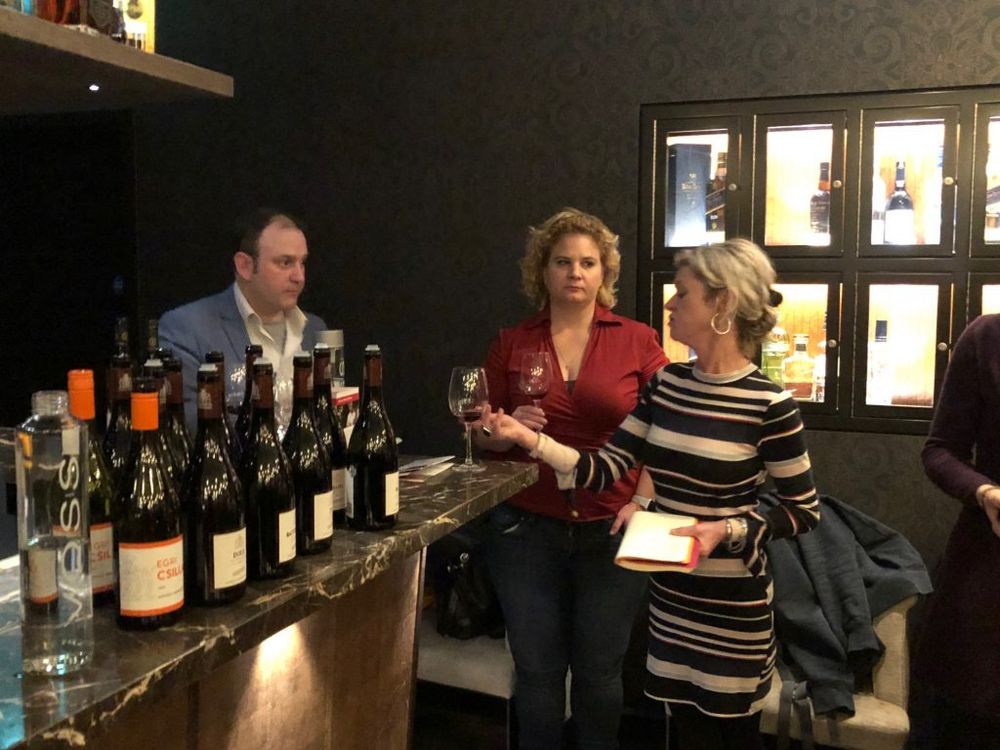
Kate Hawkings discusses her Hungarian choices with Le Gavroche’s Remi Cousin and Wines of Hungary’s Zsuzsa Toronyi
Selling Hungarian wine
But how do you sell Hungarian wine to unadventurous consumers who would rather stick with their tried and tested favourites?McCombie said the key thing was not to scare them off, which means often leading by style is a better strategy than selling by region. “So don’t ask if they’d like to try a Hungarian wine, but say that you’ve got this wine that’s really fresh and full of texture instead,” he explained.
Bulmer, who has only been in charge of buying Hungarian wine for The Wine Society for a few months, said that he was able to empathise with customers’ confusion. “I only took on Hungary at the beginning of the year and I feel as though I’m still learning. But that enables me to understand how our customers feel about Hungary. Obviously I’m one step ahead of them but for us it’s all about selling to a largely very engaged group of consumers. It’s all about getting people emotionally invested in the wines and telling stories about the winemakers, as well as making people realise that a lot of the wines are actually very approachable, charming styles when done well.”
He added that while he couldn’t hand sell wines the way it is possible to do in a restaurant, there are other ways of getting customers hooked on Hungarian wine. He pointed to the Wine Society’s Wine without Fuss programme, where customers buy a pre-mixed case of wine. “We always make sure we put an exciting new wine, such as a Hungarian wine in there which customers may not have chosen for themselves because it’s a bit weird. However, more often than not, when they try the wine they like it and we get a lot of repeat sales that way.”
The way forward for Hungary
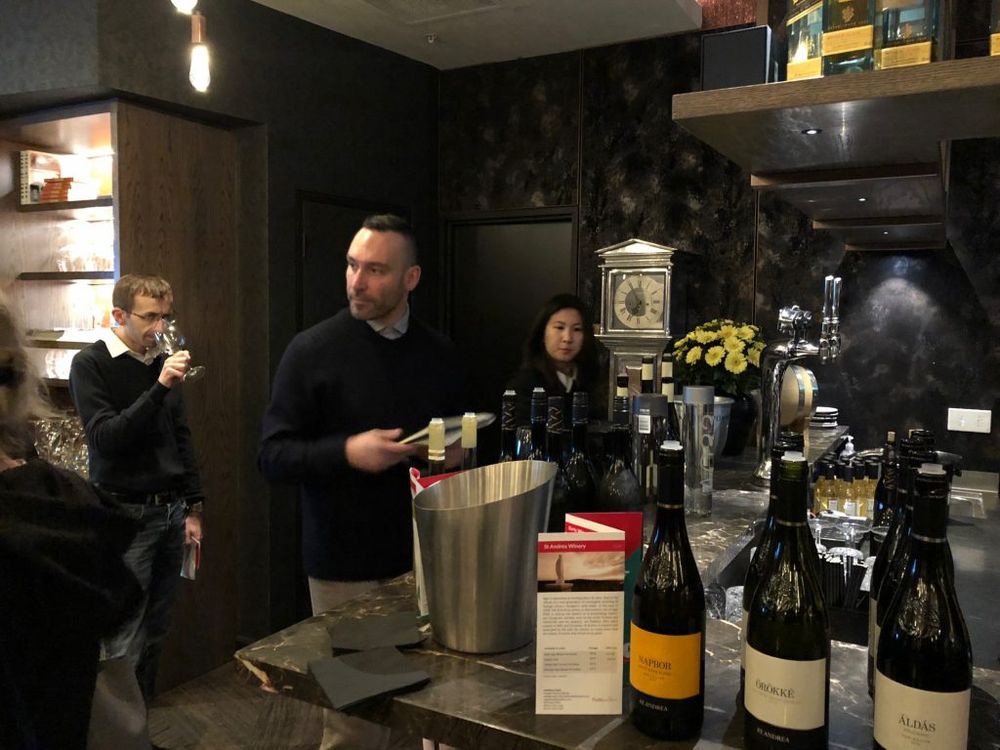
Kelvin McCabe from Adam Handling restaurants says it is part a sommelier’s job to inspire customers with wines like those from Hungary
What’s important for Hungary and its burgeoning wine industry, is to find a standout style or varietal, and to market that aggressively, according to Jon Kleeman, wine buyer at The Twisted Cellar, a new wine merchants and bar in Bishop Stortford.“You have to have that flagship wine to push forward,” he said. “Otherwise it will just be a red wine from Hungary and you lose that regional diversity.
“A lot of people are travelling to Hungary on holiday these days, and sampling the wines. But if you ask them what it was that they drunk they can’t remember. If you have a region with a lot of complicated names like Portugal then it’s really important to focus on the regional name, so a white dry ferment, for example, could become their brand. I think it’s also important to find a stand out red.”
McCombie agreed with Kleeman but said it’s also important to find the right wine. “Ketner is a little hard to find, but can be delicious and one to think about. The white equivalent of Bikavér is Csillag, but unfortunately it has all those consonants and consumers may struggle with that.” For red wines, Cabernet Franc and Bordeaux blends, as well as the indigenous red grape Kekfrankos offer real potential, he added.
Move to organic?
As for organic and biodynamic wines, McCombie said that there were a number of smaller producers moving explicitly down that route, but most winemakers were concentrating on producing quality wine. “While it’s been a while since the end of communism, it’s not been that long, so most people are concentrating on making better wine in a relatively high tech way. However, St Andrea, for example, is an example of one producer heading in the organic direction. It’s coming for sure.”
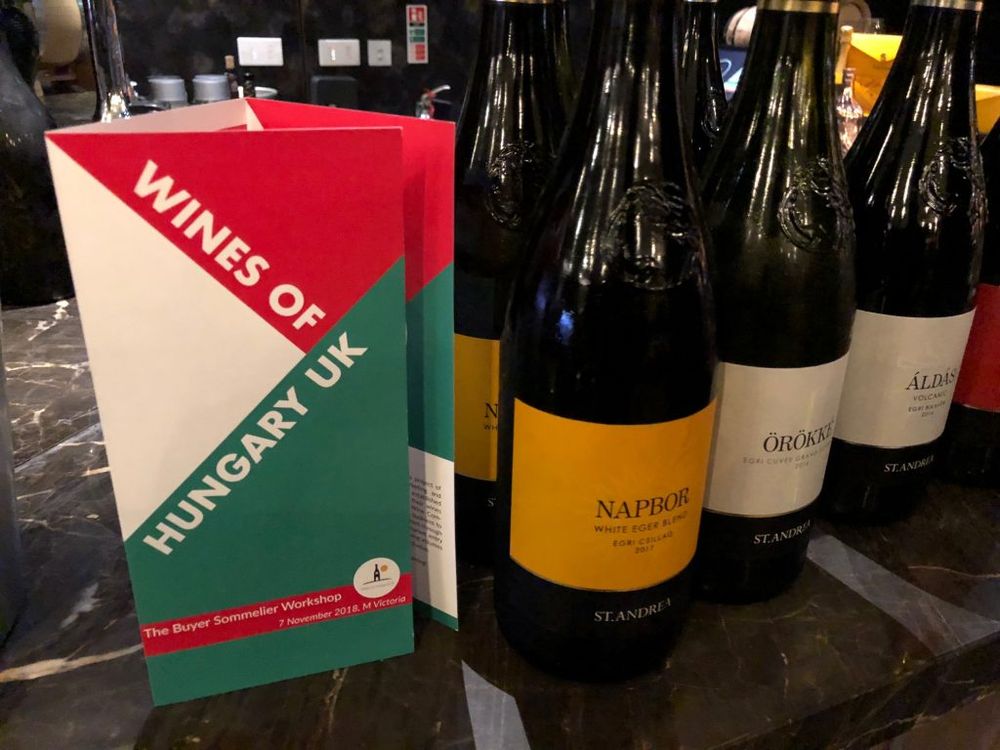
The 90 minute session was designed to allow sommeliers to take part in a debate and an open pour tasting
- Wineries featured on the day and their importers included:
- Zsirari Winery: Jascots Wine Merchants
- Barta Winery: Corney & Barrow
- St Andrea Winery: Matthew Clark
- Kovacs Nimrod Winery: Boutinot
- You can see the full list of wines and producers featured on the day in the tasting in this specially prepared tasting brochure.
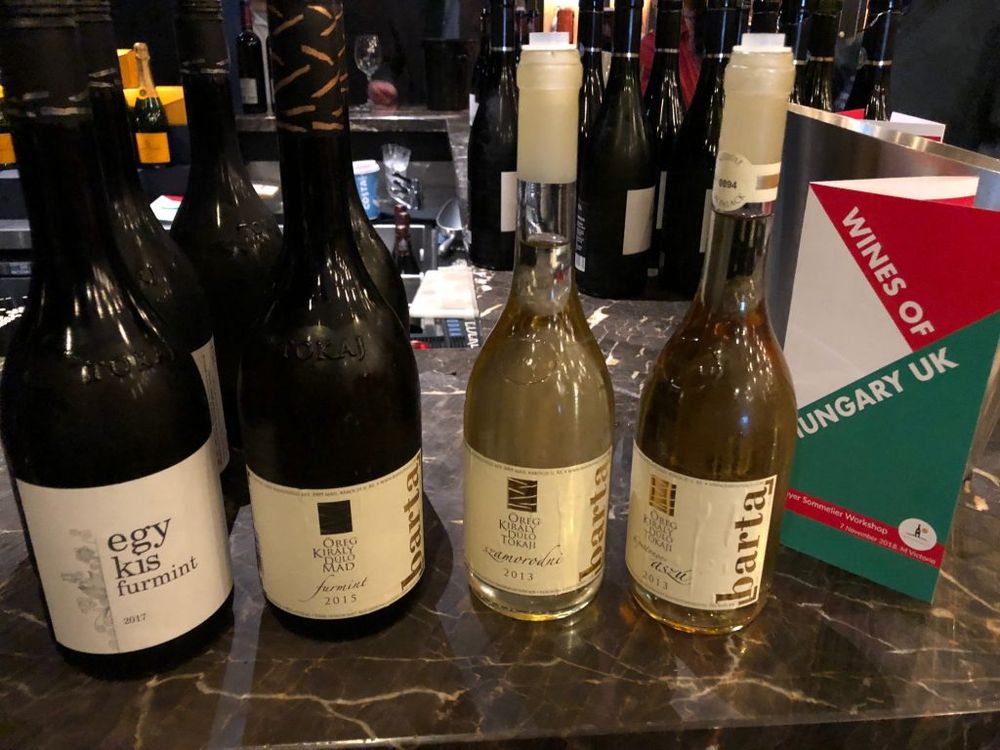
The Barta range of wines from Boutinot
































